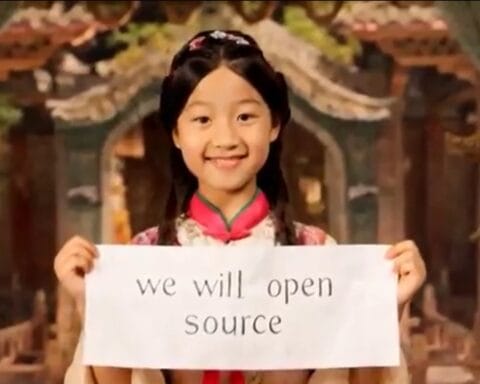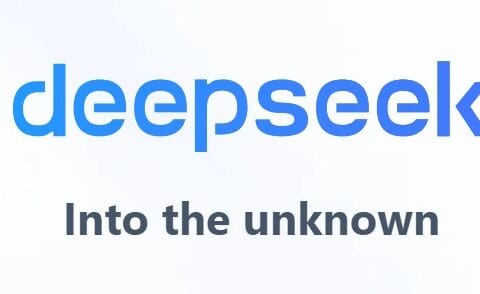Last Updated on April 18, 2024 2:56 pm by Laszlo Szabo / NowadAIs | Published on April 18, 2024 by Laszlo Szabo / NowadAIs
Key Notes for Tencent InstantMesh: Instant 3D Objects from a Single Image
- Tencent InstantMesh utilizes AI to convert static images into detailed 3D renders quickly.
- Incorporates Large Reconstruction Model (LRM) architecture for enhanced depth and detail.
- Solves the “Janus problem” by creating cohesive 3D views from multiple perspectives.
- Outperforms existing models in benchmark tests, emphasizing quality over resolution.
- Open source availability on Hugging Face allows community contributions and accessibility.
Introduction of Tencent InstantMesh
The world of 3D rendering has witnessed a huge development with Tencent‘s latest 3D rendering AI model, InstantMesh. This innovative tool has the capability to generate high-quality 3D renders from static images within a matter of seconds. With its Large Reconstruction Model (LRM) architecture, InstantMesh offers a large upgrade over Tencent’s previous framework, Instant3D.
Now we will explore the features and functionalities of Tencent InstantMesh, delve into its underlying technology, and discuss its potential impact on the field of 3D rendering. We will also examine the benchmarks and compare InstantMesh with other existing models. So let’s dive in and discover how Tencent is changing 3D rendering with InstantMesh.
The Power of InstantMesh
🤯InstantMesh from Tencent is insane – Super fast Image-to-3D with high quality output
⬇️ Link below – Generate a 3D model from a single image in 30 seconds for free 🔥🔥 pic.twitter.com/Dft4xF3vQm
— Victor M (@victormustar) April 15, 2024
Tencent InstantMesh is an AI model designed to transform static photos into immersive 3D renders. With its advanced algorithms and cutting-edge architecture, InstantMesh can generate highly detailed and realistic 3D objects in a matter of seconds. Unlike traditional approaches that require complex manual modeling and rendering processes, InstantMesh automates the entire workflow, making it accessible to a wider range of users.
One of the key strengths of InstantMesh lies in its ability to solve the “Janus problem” in 3D rendering. The Janus problem refers to the challenge of creating cohesive 3D objects from different perspectives. Often, existing models generate multiple canonical views of the object instead of a cohesive 3D representation. InstantMesh addresses this issue by leveraging a novel view generator fine-tuned from Stable Diffusion, ensuring a more accurate and comprehensive 3D rendering.
The Technology Behind InstantMesh

InstantMesh combines two distinct architectures to achieve its remarkable 3D rendering capabilities. The first is a multiview diffusion model, which processes the input image and generates additional dimensions that are not visible in the original image. This step helps to capture intricate details and enhance the overall quality of the 3D render.
The second architecture is the Large Reconstruction Model (LRM). This model constructs an orbital view object that can be experienced in a 3D environment. By leveraging the strengths of both architectures, InstantMesh is able to create highly detailed and visually appealing 3D renders.
To ensure the efficiency and accuracy of the rendering process, InstantMesh integrates a differentiable iso-surface extraction module called FlexiCubes. This module allows for efficient mesh surface extraction and enables the application of geometric supervisions such as depths and normals directly on the mesh representation. As a result, InstantMesh achieves smoother mesh outputs and enhanced geometry and texture modeling.
Benchmarking InstantMesh
Tencent has conducted benchmark tests to evaluate the performance of InstantMesh compared to other existing models. In the benchmarks, InstantMesh outperformed Stability AI’s Stable Video 3D (SV3D) on Google Scanned Objects (GSO) and OmniObject3D (Omni3D) orbit views. While SV3D performed better in certain parameters related to output resolution in the Omni3D benchmark, Tencent emphasizes that perceptual quality is more important than faithfulness. InstantMesh aims to generate “true novel views” that are unknown and offer multiple possibilities based on a single reference image.
The Availability of InstantMesh
Tencent has made InstantMesh open source, allowing developers to explore its capabilities and contribute to its development. The AI model is available on Hugging Face, a platform that provides access to various AI models. Additionally, Tencent has provided a preview app for enthusiasts to test out InstantMesh and generate and export 3D renders. This accessibility reflects Tencent’s commitment to empowering the wider community and fostering advancements in 3D generative AI.
Conclusion
Tencent InstantMesh represents a great leap forward in the field of 3D rendering. With its ability to generate high-quality 3D renders from static images within seconds, InstantMesh opens up new possibilities for various industries, including virtual reality, industrial design, gaming, and animation.
By combining a multiview diffusion model with a sparse-view reconstruction model based on the LRM architecture, InstantMesh delivers superior rendering quality and scalability. Its integration of the FlexiCubes module enables efficient mesh surface extraction and enhances the training efficiency and overall performance of the model.
With InstantMesh now available as an open-source AI model, developers and content creators have the opportunity to explore its capabilities and contribute to its further development. As the field of 3D generative AI continues to evolve, Tencent’s InstantMesh is poised to make substantial contributions and drive innovation in the industry.
Definitions:
- Tencent InstantMesh: An AI-powered tool developed by Tencent that generates high-quality, realistic 3D renders from static images rapidly, utilizing advanced machine learning models and architectures.
- Janus problem: A challenge in 3D rendering where creating a unified and accurate 3D object from multiple 2D images is difficult due to discrepancies in perspective and detail.
- Large Reconstruction Model (LRM) architecture: An advanced framework in 3D modeling that facilitates the construction of detailed and scalable 3D models from limited viewpoints.
- 3D rendering: The process of converting 3D wire frame models into 2D images on a computer. 3D rendering may include photorealistic effects or non-photorealistic rendering.
Frequently Asked Questions:
- What is Tencent InstantMesh and how does it enhance 3D rendering? Tencent InstantMesh is an advanced tool that transforms 2D images into 3D models within seconds, leveraging AI for detailed and realistic outputs. It simplifies traditional 3D modeling workflows, making high-quality 3D rendering accessible to a broader audience.
- How does Tencent InstantMesh address the Janus problem? Tencent InstantMesh overcomes the Janus problem by employing a novel view generator, which ensures that the 3D models it produces are coherent and accurate from all viewing angles, thus enhancing the realism and usability of the renders.
- What makes Tencent InstantMesh stand out compared to other 3D rendering tools? Unlike traditional tools that require extensive manual effort, InstantMesh automates the rendering process and achieves superior results faster. Its use of the LRM architecture allows for detailed reconstructions from minimal input images.
- Can anyone use Tencent InstantMesh? Yes, Tencent has made InstantMesh available as an open-source project on Hugging Face, which means developers, hobbyists, and professionals can use and modify it. There’s also a preview app for testing its capabilities.
- What potential applications does Tencent InstantMesh have? InstantMesh is ideal for industries like virtual reality, gaming, industrial design, and animation. Its ability to quickly generate realistic 3D models from simple images makes it a valuable tool for professionals across various fields.








